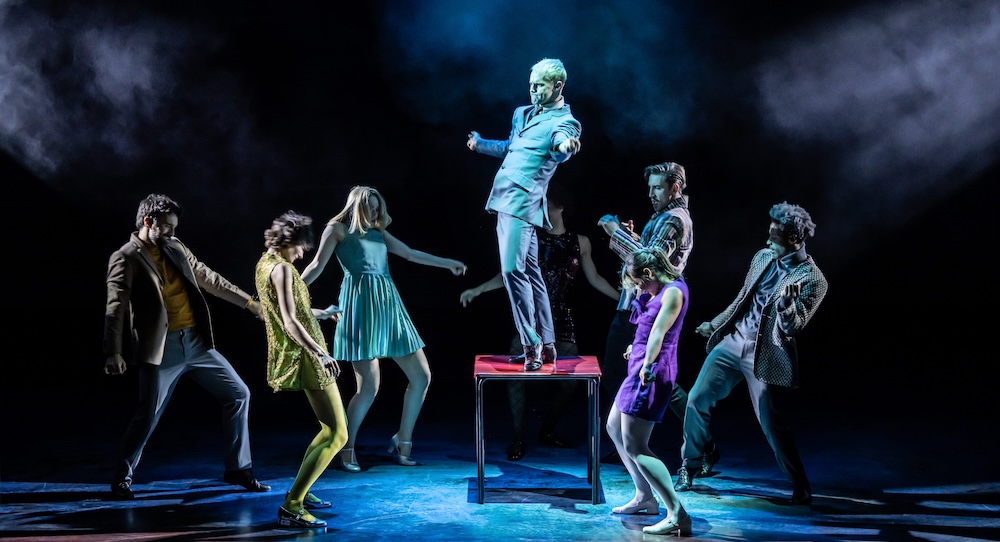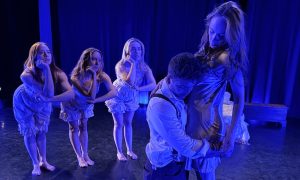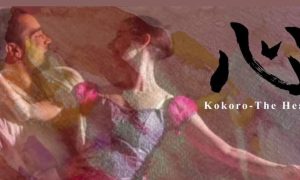New York City Center, New York, NY.
November 16, 2025.
Quadrophenia, a rock ballet adaptation of The Who’s seminal 1979 film, is a vibrant, if sometimes uneven, exploration of adolescent turmoil. Written by Pete Townshend, with music direction by Rachel Fuller and in partnership with Sadler’s Wells (UK), the story charts the youthful angst of Jimmy (Paris Fitzpatrick), a Mod navigating the confusing journey of the teenage years in the British seaside town of Brighton in the 1960s.
The work centers on a love story: Jimmy is in love with Mod Girl (Serena McCall) who seems sweet and dreams of a future in fashion. She is dating Ace Face (the inimitable Dan Bairnes translates the role that Sting played in the movie with perfection). Ace Face is a natural leader of the Mods in his colorful suits and sharp, precise movements. A group dance at a club dissolve into a duet in which Jimmy dances with Mod Girl, only to be brought back to reality when Ace Face whisks her away at the end of the dance.
At home, Jimmy can’t get much satisfaction either. His working-class parents, trapped in a rut, are emotionally distant — his factory-worker father (Adam Garcia) and pill-popping mother (Kate Tydman) are glued to the TV. In a dream sequence — more like a nightmare — Jimmy’s father is catapulted back in time. As he joins the march with his doomed WWII platoon, the scene features powerful acrobatics as the soldiers fall one by one. When Jimmy’s friend is “shot,” he rushes in, catching his falling body in a loving duet of weight shifts before gently laying him to rest. Garcia is a compelling mover who channels his character’s pain while, as the Mother, Tydman nails the theatricality needed to express her character’s mix of hope and disappointment. A brief duet between them hints at a love they once shared, only to end abruptly when the father walks away after a sultry dip.
Film actor Ansel Elgort (Baby Driver, West Side Story) has a cameo as the Godfather. Appearing shirtless under a British flag-print jacket, his ripped torso glistens in the spotlight. Air-guitaring to “My Generation” (a song released in 1965), Elgort flings himself around, struts across the stage and shows off in a role that is clearly a stand in for Pete Townshend in his heyday. The Who were notorious for smashing their instruments after a show and Elgort simulates this wild catharsis at the end of this scene. While there is driving and dissonant guitar music, which is different than the rest of the show’s orchestrated music, I’m sure I’m not the only who missed the song’s raw and stuttering lyrics — “people try to put us down, just because we g-g-get around… talkin’ ‘bout my generation.”
Director Rob Ashford’s light touch keeps the action moving in between dance sections. The set (Christopher Oram) and video (Yeastculture) are outstanding and Obie worthy. Yeastculture’s videos create a fully immersive experience utilizing aerial shots and images that tilt and whirl in the space. Projections range from a sliver of an image to capture smaller spaces (a tunnel) to an aerial view of waves crashing at the shore projected against the entire back wall, appearing wild and unwieldy. Oram’s moveable set features panels that are assembled like puzzle pieces to create a wide array of settings from a diner to a subway (a playful and hilarious scene in which dancers capture the rush hour crush wonderfully). Fabiana Piccioli’s lighting compliments the video and set design to deepen the mise en scène of each section.
Paul Smith’s costumes of colorful and sharp lines for the Mod suits, with emerging punk rock elements, made each dancer stand out. Choreographer Paul Roberts (who passed away in September 2025) had a gift for creating complex group scenes. A notable moment in the show is the fight scene between the Mods and the Rockers: instead of simulating violence, the dancers rev up for an attack only to freeze on contact. The impact gathers in our mind as we are left to imagine the rest.
Jimmy’s unrequited love, disillusionment and drug use culminates in a hallucinatory scene with Drugs (Amaris Gillies in a sparkly blue dress), with pills projected in space, raining down on Jimmy who takes flight in a harness. As he flies high through space, he imagines Mod Girl coming for him. Soon he crashes from the drugs and awakens by the water’s edge. As he wanders the streets of Brighton, he stumbles upon Ace Face working as a bell hop in a big, posh hotel. He can’t believe what he sees. Ace has been diminished in his subservient role.
Jimmy’s confusion, the rivalry between the Mods and the Rockers (there could have been more of this) and his crush on Mod Girl are all well explored. In the end, Jimmy perches at the cliff’s edge with four friends, the giant waves projected against the backdrop again. The choreography increases the tension as the ensemble gently catch Jimmy as he’s thrown back and forth between them in a dance of opposites: tension and release, fall and recovery, battement and contraction. This push-pull, a reflection of his mental state, leaves him teetering at the edge of the cliff as the lights go down.
The supporting cast — 11 extraordinary movers — help round out the narratives. The unbridled energy of the Who’s music is embodied in Roberts’ choreography, and is the heart and soul of the show, but the orchestral version of The Who’s music mutes the power that lies at the heart of the songs. Even one song — my choice would have been “My Generation” — would have provided the punch needed to send this rock ballet to great heights.
By Nicole Colbert of Dance Informa.















